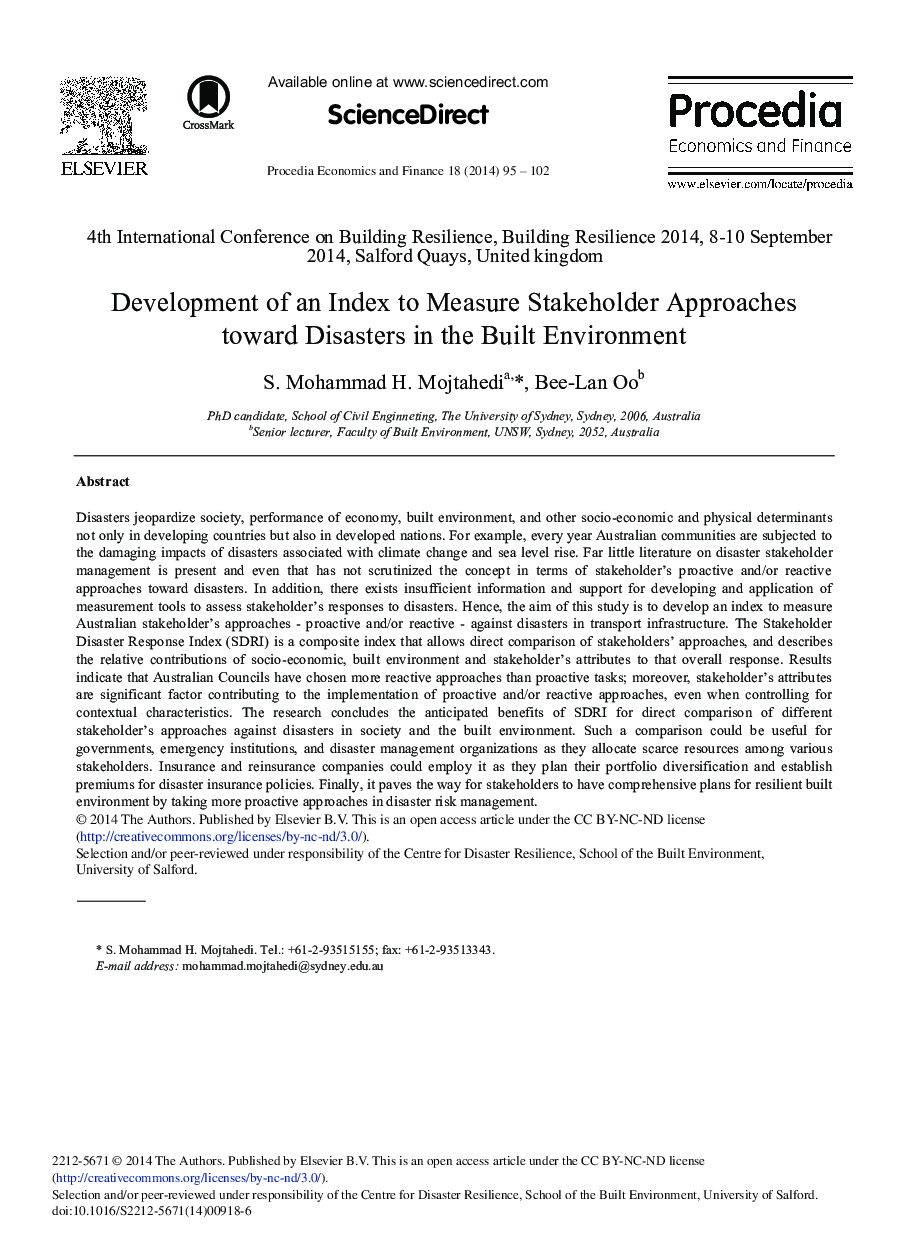| Article ID | Journal | Published Year | Pages | File Type |
|---|---|---|---|---|
| 981482 | Procedia Economics and Finance | 2014 | 8 Pages |
Disasters jeopardize society, performance of economy, built environment, and other socio-economic and physical determinants not only in developing countries but also in developed nations. For example, every year Australian communities are subjected to the damaging impacts of disasters associated with climate change and sea level rise. Far little literature on disaster stakeholder management is present and even that has not scrutinized the concept in terms of stakeholder's proactive and/or reactive approaches toward disasters. In addition, there exists insufficient information and support for developing and application of measurement tools to assess stakeholder's responses to disasters. Hence, the aim of this study is to develop an index to measure Australian stakeholder's approaches - proactive and/or reactive - against disasters in transport infrastructure. The Stakeholder Disaster Response Index (SDRI) is a composite index that allows direct comparison of stakeholders’ approaches, and describes the relative contributions of socio-economic, built environment and stakeholder's attributes to that overall response. Results indicate that Australian Councils have chosen more reactive approaches than proactive tasks; moreover, stakeholder's attributes are significant factor contributing to the implementation of proactive and/or reactive approaches, even when controlling for contextual characteristics. The research concludes the anticipated benefits of SDRI for direct comparison of different stakeholder's approaches against disasters in society and the built environment. Such a comparison could be useful for governments, emergency institutions, and disaster management organizations as they allocate scarce resources among various stakeholders. Insurance and reinsurance companies could employ it as they plan their portfolio diversification and establish premiums for disaster insurance policies. Finally, it paves the way for stakeholders to have comprehensive plans for resilient built environment by taking more proactive approaches in disaster risk management.
